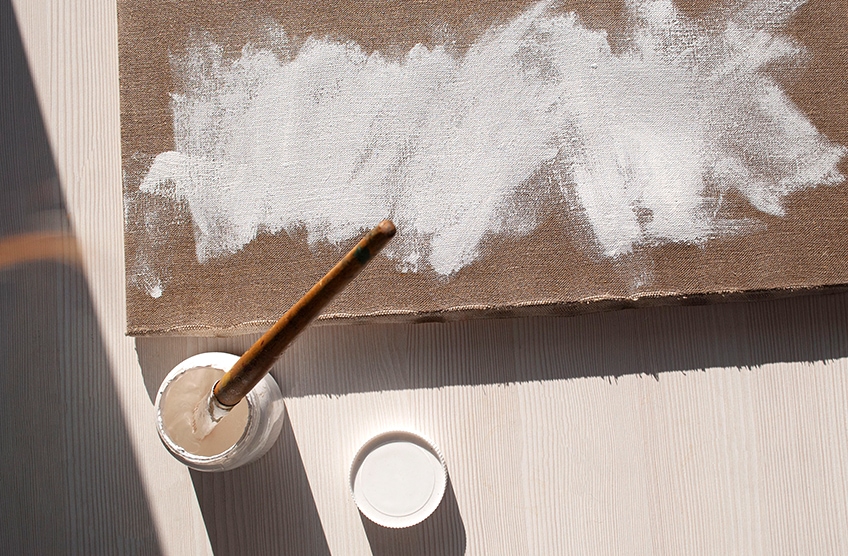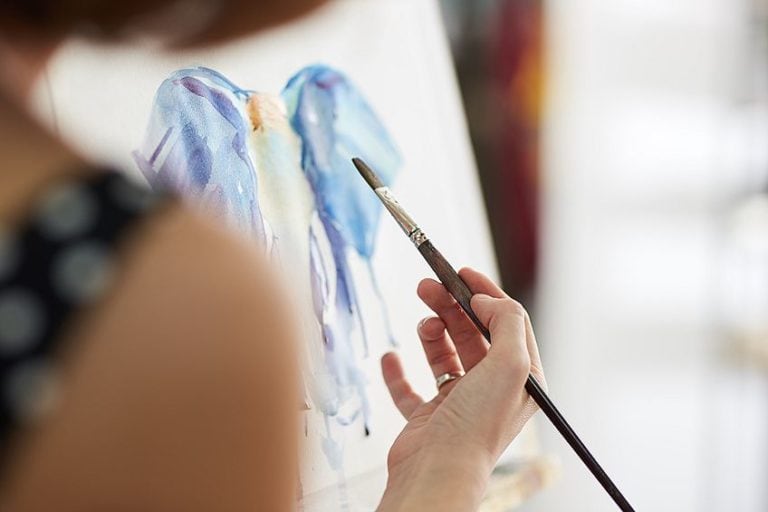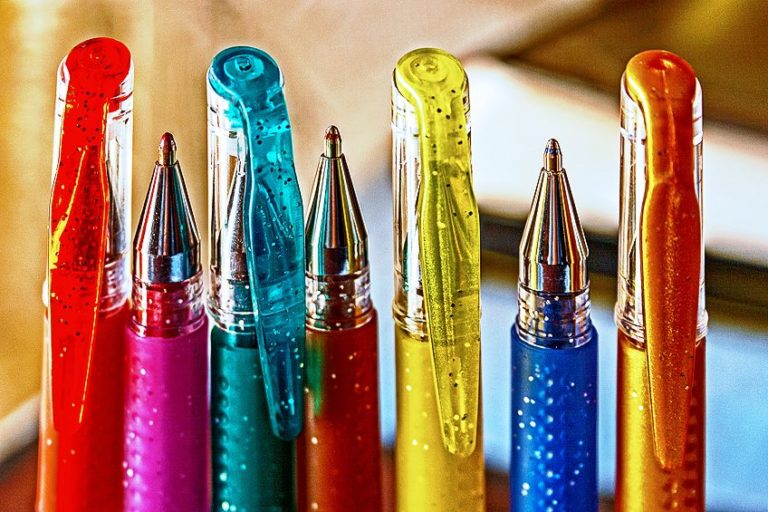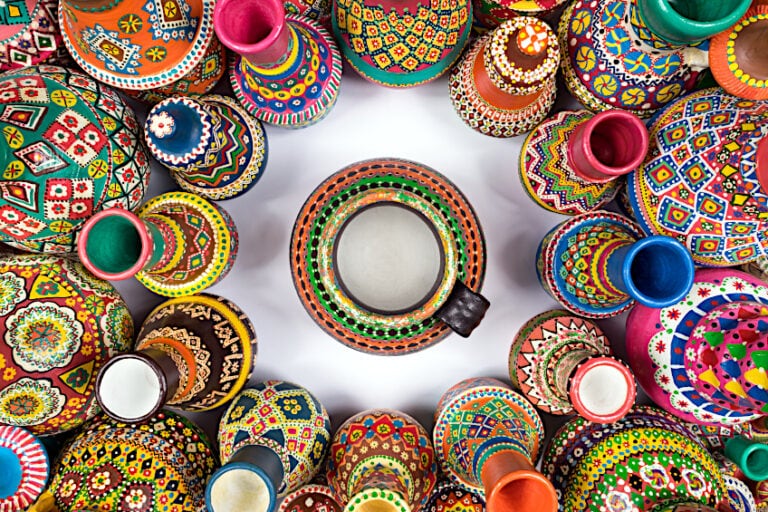How Long Does It Take Gesso to Dry? – Learning How to Use This Primer
This post may contain affiliate links. We may earn a small commission from purchases made through them, at no additional cost to you.
Many artists will start using gesso at some point or another. Gesso is used to seal a canvas before painting, but can also be used to add texture to paintings and canvases. Some artists struggle with learning how to apply gesso. When learning how to apply gesso properly it is important to ask: how long does it take gesso to dry?
Table of Contents
- 1 What Is Gesso?
- 2 How Long Does It Take Gesso to Dry?
- 3 How Many Coats of Gesso Should I Apply?
- 4 How to Apply Gesso Properly
- 5 Frequently Asked Questions
What Is Gesso?
Gesso is a primer that is made from chalk and pigment suspended in an acrylic binder. The pigment used is titanium white, which means that gesso is usually a white to off-white color. Gesso is used by artists to prime a canvas for painting. Priming stops paint from being soaked through the canvas. If you’re painting with oils, gesso also protects your canvas and prevents deterioration as time passes. Gesso is thinner than acrylic paint but dries very hard, which helps to stiffen canvases. Gesso also provides a slightly textured surface which assists paint with adhesion.
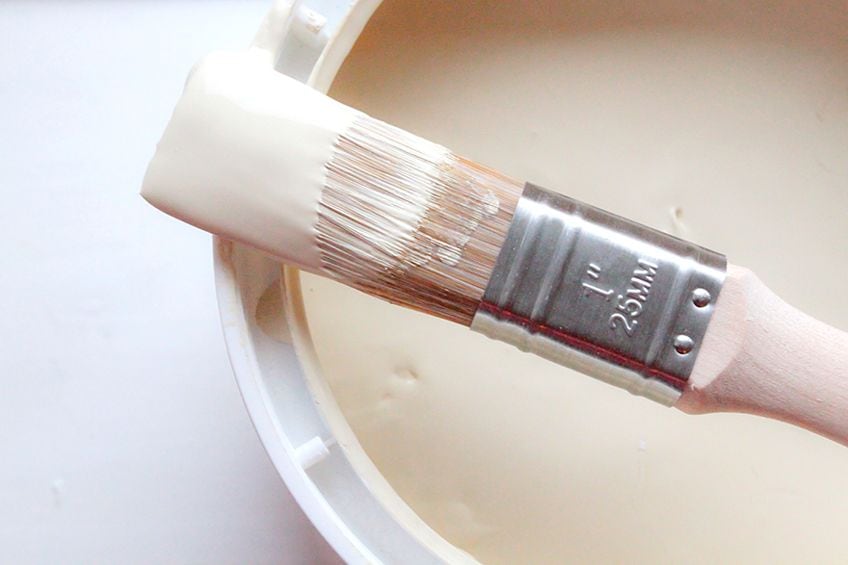
Gesso may also contain other chemicals that can improve flexibility, or help to ensure the longevity of archival pieces. The white surface provided by gesso readily accepts mediums such as acrylic, oil, and drawing. Gesso can be applied to nearly any surface, which will then allow you to apply paint on top of it.
For example, you could apply one or more layers of gesso to a vinyl record or a box and you can easily paint on top of it. If you painted on an unprimed surface the paint would possibly soak through which could lead to an undesirable result. Although if a staining effect is what you are interested in, then you can experiment with painting on untreated canvases for some interesting results.
Different Types of Gesso
Gesso is not very difficult to find, as it can be bought readymade at most art shops. While gesso is most commonly white, you can also find it in clear or colored variants. You can even tint your own gesso at home, and make any color you want. Just mix together some gesso and acrylic paint and voila! You now have prepared your own tinted gesso.
When buying gesso you may encounter artist grade and student grade. There is only one main difference between the two. Student-grade gesso is cheaper because it contains less pigment than artist-grade gesso. Artist-grade gesso will be more thick and opaque. For these reasons artist-grade gesso also costs more than student grade.
Different brands of gesso will also have variations in consistency and texture. Some will be more fluid or thick, while others may be more smooth or textured. It might take some experimentation before you find a brand of gesso that you like. Some ultra-thick brands of gesso can even be used to add texture or sculptural effects to a painting, which is perfect for impasto techniques.
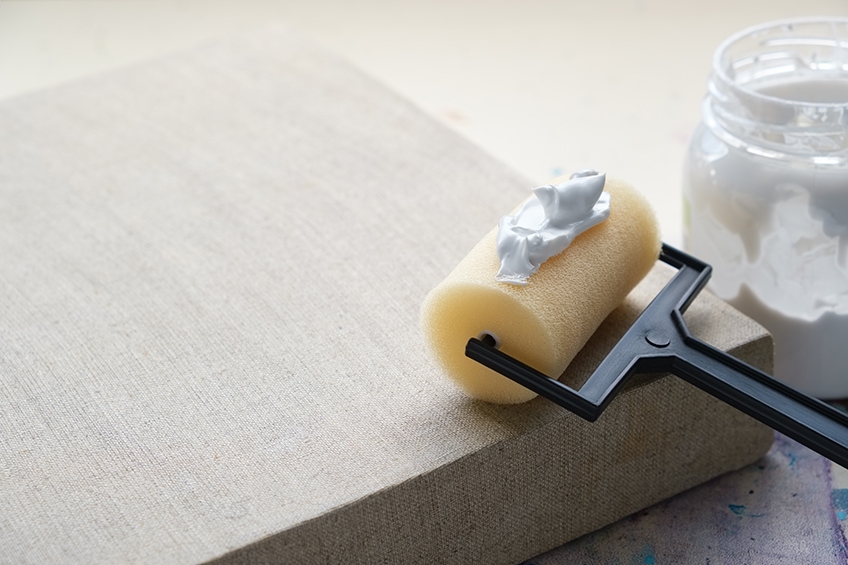
Gesso comes in tubes, jars, and tubs. If you buy a tube, you just squeeze the gesso straight onto your canvas and smooth it out with a brush. If you plan on mixing your gesso with paint then you will squeeze it out onto your palette and mix it first. If you have gesso that comes in a jar or tub, you can just dip your brush in and then apply it onto the canvas.
You may also find gesso in a spray can. Gesso spray paint provides an easy way to prepare a hardened and smoothed surface to paint on. You can apply the gesso spray paint in thin coats or according to the instructions of the manufacturers. Using a gesso spray paint can save time and eliminate brush strokes, as well as any need for sanding or the cleaning of brushes. Some brands of gesso spray paint have very short drying and curing times.
How Long Does It Take Gesso to Dry?
So you’ve found some gesso and you are getting ready to prime your own canvas, but there is still the question: how long does it take gesso to dry? When working with gesso you need to understand the difference between the terms “drying” and “curing”. Drying occurs when the moisture has left the gesso, while curing is what happens when the chemical bonds harden and properly solidify.
Gesso may feel dry to the touch, but it may not have cured yet. If gesso hasn’t been cured then it is not ready to have paint applied to it. Follow manufacturer’s guidelines regarding this and take your environment into account. Many factors can affect drying time. Once a layer of gesso is dry to the touch it is ready to have another layer of gesso applied on top of it.
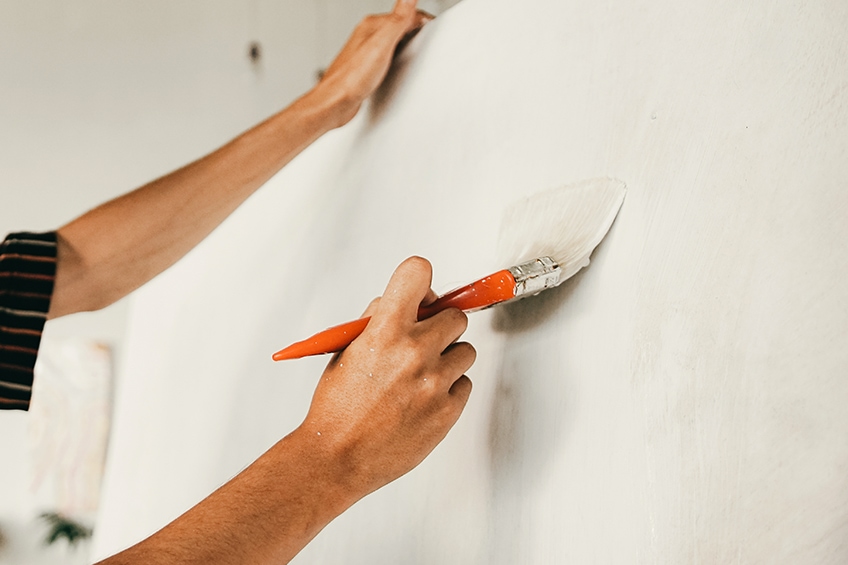
Allow a layer of gesso to dry for at least an hour and then check to see if it is dry to the touch before attempting to paint another layer on top of it. If the initial layer has not dried properly it can lift when you try to apply any further layers. Lifting may not be a problem for you if you do not apply the gesso in layers that are too thick.
Factors That Affect How Long It Takes Gesso to Dry
Anything from temperature to humidity or layer thickness to air movement can affect how long it takes for your gesso to dry and cure. If you are painting with oils then you will be waiting multiple days to allow for all your layers of gesso to dry and properly cure. Curing multiple layers of gesso can take anywhere from three to four days. A general rule of thumb is to allow a day for every layer of gesso added to properly cure.
On the other hand, gesso can take anywhere from twenty minutes to about an hour to dry to the touch. These timeframes depend on the factors that we list below. You can manipulate your environment in different ways to try to speed up the drying and curing time of your gesso.

Wind
Air movement will affect how quickly your gesso dries, strong gusts can also deposit dust or dirt on your canvas. There is a higher chance of this happening if you have your canvas placed outdoors. If any dirt lands on your canvas, you can use a palette knife to gently remove it before the gesso dries.
If your canvas is outside, a particularly strong gust of wind can even knock your canvas to the ground if it is unsupervised and improperly secured. Aside from these risks, drying your canvas outdoors is still a very viable option as the heat from the sun can also assist in speeding up drying times.
If you want your gesso to dry faster you can use a hairdryer or a fan. A hairdryer is a particularly good choice for speeding up gesso drying times, this is because a hairdryer also raises temperature while lowering humidity. Make sure that you are constantly moving your hairdryer as you attempt to dry the canvas, as you do not want to scorch the surface. Moving the hairdryer constantly will also ensure that the gesso dries evenly, this is important because the gesso will shrink as it dries. Sudden and uneven drying can cause cracking.
If you have a heating or cooling system, the air currents from that can also help to dry your gesso faster. Alternatively, you could open up a window to allow a draft into your painting area, which could speed up gesso drying times too.
Temperature
Gesso will dry faster in hotter temperatures as warmer conditions allow for faster evaporation of moisture. Cooler conditions slow the rate of evaporation and stifle drying times. A heating system can help to speed up drying times as it will increase the ambient air temperature while also lowering humidity.

Humidity
If you live in an area with relatively low humidity then your gesso will dry quickly. This is because dry air allows for faster evaporation of water and faster drying times. You can affect the humidity of your painting area by using a heating or cooling system to dry out the air in your room. If you are drying your gesso in a low humidity area it can take anywhere from twenty minutes to an hour to completely dry.
Thickness
Thick layers of gesso will take longer to dry. This is because gesso dries from the outside inwards. Gesso may seem dry while remaining wet below the surface. If you disrupt the surface of the outer layer whilst it has not properly dried below it may fold or peel back. This will cause an imperfection on the surface. Be careful while testing if your gesso has properly dried. Rather take the time to wait until it will definitely be dry than ruin your finish with impatience and hurry.
How Many Coats of Gesso Should I Apply?
If you are painting with acrylics then the amount of gesso coats you apply is optional. If you are painting with oil, however, then you should apply about three to four coats. Applying this many coats will avoid the oil paint penetrating through the gesso and into the canvas underneath. Depending on how thick your application of gesso is, curing may take up to several days depending on your environment. Painting on gesso that is uncured can cause holes to be rubbed into the surface of your painting.
It is generally important to take the time to properly allow your gesso coats to dry and cure before you start painting. The exception to this is if you want your paint to mix with the gesso on purpose. This method can be quite interesting to experiment with but you will have to keep in mind that the gesso will lighten the colors of your paints when mixed.
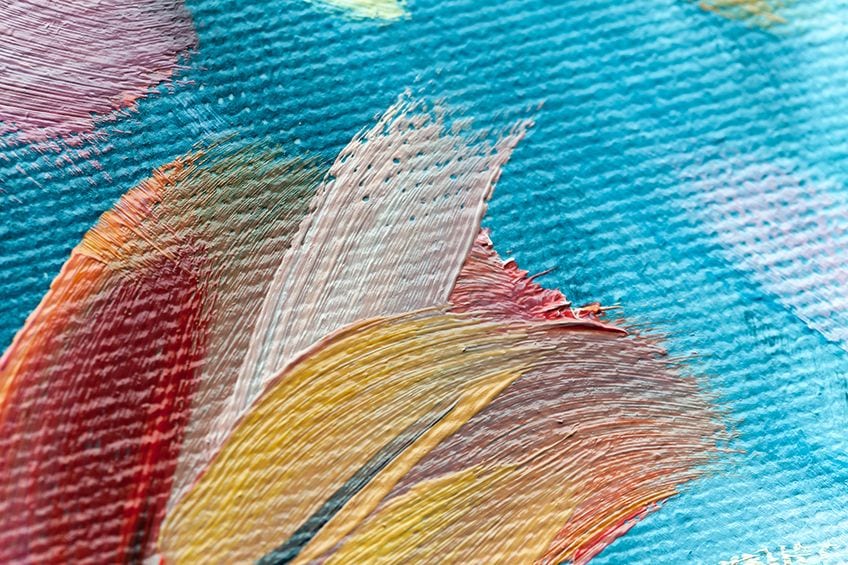
Aside from your medium of choice, there is another factor that may determine how many layers of gesso you may want to apply. This factor would be your personal preference. It would depend on how textured you like your painting surface to be.
You may want to play around with the number of coats of gesso you apply to a canvas and see how it feels or how the paint sits on top of it. In general, we recommend at least two layers of gesso be applied so that you can be sure that you have not missed any spots. If you find it preferable to paint on a smooth surface, then you will want to apply a minimum of three coats of gesso. Once your gesso has cured another option for a smoother finish is to lightly sand it down.
Curing a layer of gesso for about a day generally allows for acrylic painting or drawing with ease. If you are using oil paint then we recommend that you allow the gesso to cure for a minimum of three days. Oil paints are hydrophobic so if any water remains in the gesso coats then the paint may not adhere to the surface optimally.
How Many Coats of Gesso Should I Use for an Oil Painting?
As stated above, we recommend that you apply at least three layers of gesso if you plan on working with oil paints. Gesso is more important if you are painting with oil as the gesso provides a barrier between the paint and the canvas. The oil in the paint can seep through into the canvas and cause it to degrade over time. This will affect the longevity of your piece as it breaks down the canvas.
If you look back at some of your older oil paintings and notice yellow spots on the back of the canvas, it is a sign that you are not applying enough gesso before you begin painting. The yellow spots you would see is the oil from the paint that has seeped into the back of your canvas.
How Long Does It Take Gesso to Dry for an Oil Painting?
Allow the gesso to dry for roughly three days before you begin painting, this should account for most environmental conditions, but if you are in doubt be sure to read the product instructions for more brand-specific information. You can also hold your hand to the back of your canvas and lightly touch it. If the canvas feels cool then there is likely still moisture present.
If you are painting with oil and don’t want to risk priming your canvas incorrectly, then it is always an option to buy a canvas that is already primed with gesso. Primed canvases are available at almost any art supply shop and can save you a lot of time and unnecessary struggles.

How Many Coats of Gesso Should I Use for an Acrylic Painting?
Acrylic paint does not contain any oils that can affect the integrity or longevity of your canvas or painting so it doesn’t really matter how many coats of gesso you apply if you are painting with acrylic. You can apply as many coats as you prefer, or even none at all. The more layers you add will affect the texture of your canvas, so if you want a smoother surface you just need to apply more layers of gesso.
If you apply no gesso before painting on an untreated canvas it will have a staining effect. We recommend at least applying one coat of gesso for more traditional applications. Two coats of gesso are best if you want as little gesso as possible while being sure that you haven’t missed any spots on your canvas.
How Long Does It Take Gesso to Dry for an Acrylic Painting?
If you want to paint with acrylic then you can generally begin about a day after your final layer of gesso has been applied. In fact, much like with additional layers of gesso, you can also begin painting with acrylic once your gesso is dry to the touch. Keep in mind however that this can have mixed results.
We suggest waiting at least one day before painting with acrylics when possible. This is because you generally don’t want the gesso to lift into your acrylic as you begin painting. Lifting can affect the color of your acrylic paints. If this is something you actually do want or that does not bother you then you need not worry about jumping in right away.

How Many Coats of Gesso Should I Use for a Drawing?
Much like if you are using acrylic paints, it does not really matter how many layers of gesso you apply if you will be drawing on it. With drawing, there is no risk of oil damaging the canvas or affecting its integrity unless you have a habit of pressing very hard as you draw.
This means that the only factors to consider with applying your gesso are the color, stiffness, and texture of your primed canvas after the layers of gesso have been applied. If you want the finish to be smoother then you will add additional layers. If you want a whiter base then you may also need multiple layers. The number of layers you apply will also make your canvas gradually stiffer, which can help lessen the chances of piercing through your canvas as you draw.
How Long Does It Take Gesso to Dry for a Drawing?
You will want the gesso to dry completely before you begin drawing on it as drawing while wet will distort the surface of the gesso. It will also prevent color from properly depositing. The colors will be dull or light if they even appear. The pencil strokes will also be inconsistent and you run the risk of gumming up your pencils. When gesso has properly dried it becomes an excellent drawing surface.
It is not necessary to wait for the gesso to cure completely before you draw on it, but it can help. A general rule of thumb is to allow a single layer of gesso around an hour to dry and a day to cure. This means that you can apply a new layer almost every hour, but if you apply three layers you would be waiting around three days before it will fully cure.
How to Apply Gesso Properly
Priming your canvas with gesso can seem intimidating but it is quite easy. Once you have your gesso and a few other supplies you are ready to get started. The hardest part is understanding how long it will take your gesso to dry and having the patience to wait. Below we have outlined how to apply gesso and what you need to do it.
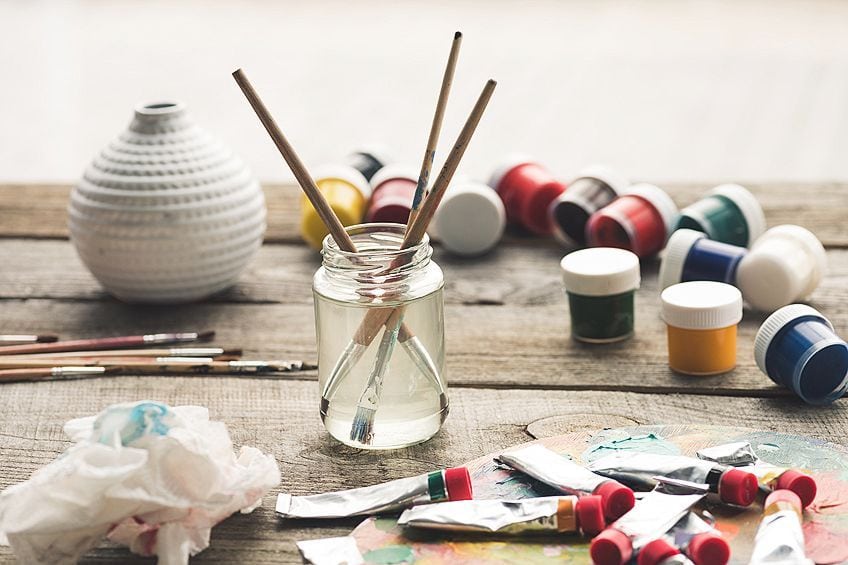
Things You Will Need
- Your raw, untreated canvas
- Acrylic gesso
- A wide soft-bristle brush
- Fine grit sandpaper (optional)
- Another soft-bristled brush of any size (optional)
- A bowl or container (optional)
How to Apply Gesso: Step-by-Step Tutorial
- Make sure that you are working in an area with good ventilation and decent lighting. Ensure that the space is clutter-free and that you have put down old newspapers or tarps to avoid making any mess once you get started.
- Wipe down your unprimed canvas very lightly with a damp cloth or some rubbing alcohol. Make sure that you do not wet your canvas but rather that you are removing any dust or loose fibers.
- Open your gesso and stir thoroughly. At this point, you may want to consider pouring some of your gesso into a separate container and watering it down slightly for the first layer (optional). This is a good idea because it helps create a smoother surface for any layers to follow.
- Dip your wide brush into the gesso and begin painting in long even strokes across the canvas. Make sure that you keep your direction consistent and that you are moving parallel to each previous stroke. This means if you are moving vertically with each stroke, you must continue to do so. Make sure that your edges are lining up as closely as possible with each stroke.
- If there are any lumps or lines, you can use the other small brush to gently smooth them out (optional). Make sure that this brush is dry when you use it for this purpose.
- Allow the layer to air dry for twenty minutes to an hour. You can speed up this process using some of our advice higher up in the article. Once the gesso is dry to the touch you can continue on to the next step. If you are unsure you can feel the back of the canvas to check for moisture.
- Make sure that you are properly cleaning your brushes between each layer by rinsing them thoroughly with water and setting them aside to dry.
- If you want to work on a smoother surface you can lightly sand the dried gesso before adding the next layer (optional). Remember that the number of layers you may want will depend on the type of paint you are using and the texture you would prefer on your canvas.
- Follow steps four to eight until you are pleased with the result and number of layers, rotating the canvas at right angles with every layer to ensure optimal coverage. Any layers of gesso applied after the initial one do not need to be watered down. Depending on the thickness of your layers allow about a day’s curing time per layer. Once the canvas has properly cured you are ready to begin painting.
Gesso is a primer used to seal canvases and many other surfaces before painting. It is a very versatile substance that can be used to add texture or to smooth out surfaces depending on how it is applied and in what quantities. Many artists find gesso a bit intimidating to use, but with some understanding of how gesso works it becomes a very simple process. Keep in mind what certain mediums require from gesso as well as what affects how gesso dries, and you should be on the right track.
Frequently Asked Questions
Should I Try to Make Homemade Gesso?
Most people buy ready-made gesso because it is reliable, easy to acquire, and fairly inexpensive, but other people do make their own homemade gesso. Our advice is to stick with store-bought gesso until you understand what you like and how it works, and then you can start trying to make your own. If or when you decide to make and use your own gesso, you should do so at your own risk as there may be undesirable results until you find the right balance of components.
Should You Gesso a Primed Canvas?
You could add gesso to a primed canvas if you wanted to, but there isn’t a reason to do it aside from altering the texture somewhat. A primed canvas has already had gesso applied to it in amounts that are adequate for most people’s needs.
Can I Use Acrylic Gesso Under an Oil Painting?
You absolutely can. Acrylic gesso can be used under an oil painting as long as you apply a few layers and allow it to cure properly. Oil gesso may have slightly better long-term results but if you are just starting it is not a necessity at all.
Should I Use Artist or Student Quality Gesso?
The main difference between artist and student grade gesso is the amount of pigment. If you want a completely white canvas with less effort then it may be worth your time to invest in artist-grade gesso. But if you don’t mind adding a few layers for the same effect, or you don’t want your canvas fully white in the first place then student grade is probably best for you. Keep in mind that you could always add white pigment to your student grade gesso to solve this problem on your own without spending much more money. Just mix some titanium white into your gesso before applying it to your canvas.
Can I Color the Gesso?
Yes! Just like we mentioned using titanium white above, you can also use any other color you like to tint your gesso. There is also gesso on the market that comes pre-colored, premixed, and ready-to-use. You could even mix sand, wood shavings, or textured paints into your gesso to add an extra dimension to your primed canvas once it dries.
Should I Use Store-Bought Primed Canvases?
You absolutely can. There is no real problem with pre-primed canvases, although some people do not like the glossy finish that some may have. Certain paints may be repelled by the glossier pre-primed canvases available on the market. Many artists find preparing their own canvas to be very fulfilling and even cost-effective. This is especially true if they want the ability to customize every aspect of their canvas, right from the absorbency to the size, texture, or finish.
How Do I Create a Smooth Finish on My Canvas?
You can sand down layers of gesso once dry, before applying any more layers. You could also make sure that you are applying the gesso in thin, even layers or even water down your gesso slightly before application.
Larissa Meyer is a 32-year-old mother from Michigan and creative spirit since childhood. Her passion for painting and drawing has led her to an education as an illustrator and a career as a freelance graphic designer. She has a Bachelor of Fine Arts in Illustration and a degree in Graphic Design. Larissa is a talented artist who is able to master a wide range of styles and techniques to bring her artistic vision to life. Her greatest passion is currently fluid painting and epoxy resin art. Larissa’s love for art and her knowledge and experience in illustration make her the perfect Creative Director for our fluid-painting.com team. She is the creative head of our team and shares her passion and knowledge with our community through articles and tutorials.
As a mother of a 2-year-old daughter, Larissa also understands the importance of fostering creativity in early childhood. She uses her experience and knowledge to help other parents inspire their children and develop their artistic skills as well.
Learn more about Larissa Meyer and about us.

